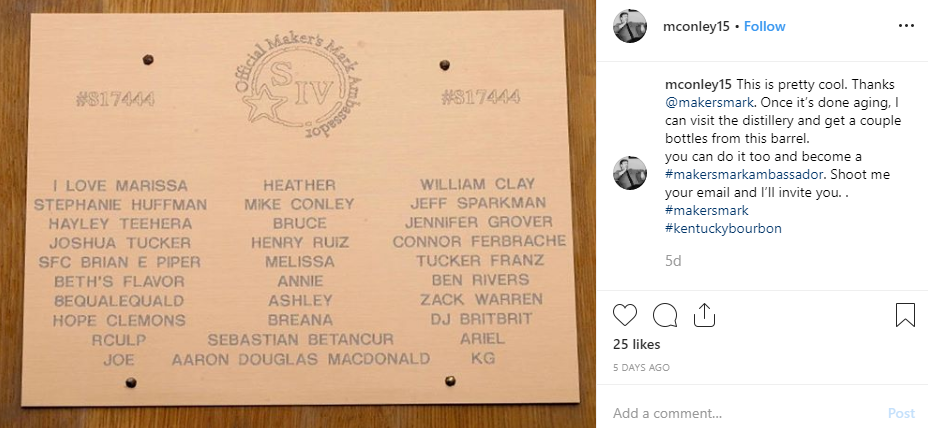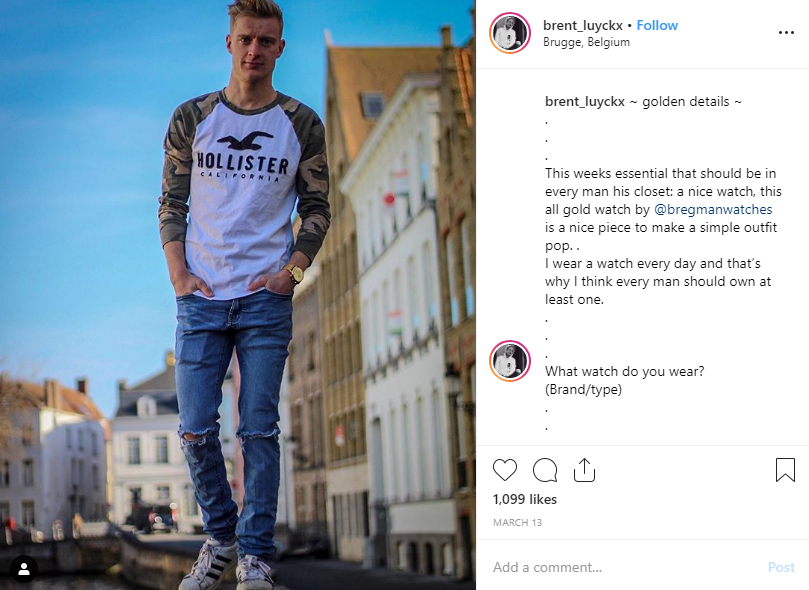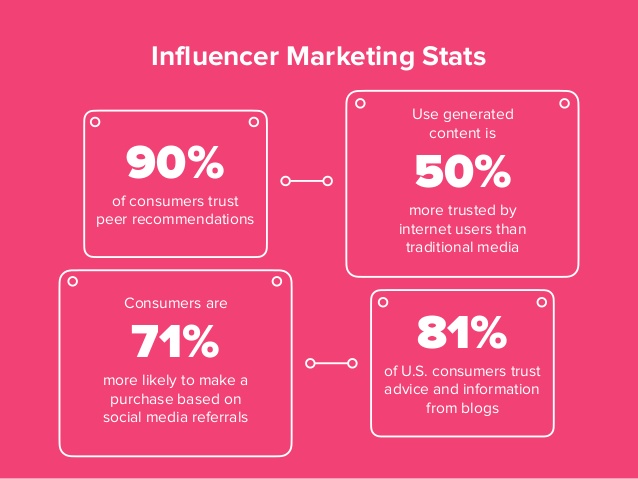Creating a brand ambassador or influencer program is a great way to gain and keep new customers. People tend to trust suggestions from their friends and family much more than standard advertisements. However, the language used in the referral marketing space can be really confusing. What separates a brand ambassador from an influencer?
Many companies use these terms interchangeably. And influencers and brand ambassadors can fulfill the same basic purposes.
Both share your product with their audience, which helps you grow your customer base. However, several key factors separate brand ambassadors and influencers. Let’s examine the similarities and differences between brand ambassadors and influencers.
Who is a brand ambassador?
Brand ambassadors are real people who love your brand and your products. These individuals actively use your brand’s products, and they want to spread the word about your products because they are passionate about seeing your brand succeed. Think of them as “top-notch cheerleaders”!
Ambassadors are experts in your brand, and experts at promoting your products casually, via word-of-mouth. They aren’t always celebrities, and they don’t always have a gargantuan network of social media followers. But, they are often authorities in their field—and the field your brand serves.
- For example, a dentist makes a credible brand ambassador for mouthwash.
- And a fitness instructor makes a reliable brand ambassador for Lululemon.
These people don’t have to be field authorities, though, as long as they’re committed to spreading the word about your brand—they could be employees, partners, or customers.
This fitness instructor is a Lululemon brand ambassador.
Most brand ambassadors agree to maintain an ongoing relationship with your brand and will continue to repeatedly promote it on social media, at trade shows, events, and through networking. Instead of using a script, they like to talk to others organically and one-on-one, as if they were having a conversation with a friend (although they may have to follow a list of guidelines that you provide). Which is why brand ambassadors are important for your marketing strategy.
They might receive money or free products as an incentive for their services, but not necessarily. Often, brand ambassadors are more than happy to assist you without compensation—seeing you succeed is incentive enough.
As an added bonus… They’re great people to get to test new products and get feedback from, as they’re always excited to help make your brand better.
After seven years of loyalty, Maker’s Mark Ambassadors receive the opportunity to purchase bourbon from a barrel that bears their name.
What’s one of the best parts of brand ambassadors? They’ll usually create content, like social media posts, product images, and blog articles, for you for free. They’ll use their authentic perspective to talk about your brand, so it’s easy for them to connect with their audiences genuinely and with true enthusiasm. Plus, they’ll share the content with their friends, who will likely spread the word to their own friends (free publicity!)
It’s clear to audiences that a brand ambassador isn’t trying to push products or opinions. After all, they aren’t explicitly saying “buy this.” Rather, they are simply telling why they love a product from their own experiences, to inform others about the brand. As a result, brand ambassadors give new and future customers a compelling reason to trust you.
In a nutshell, brand ambassadors are your informal (and extremely cost-effective) spokespeople—the faces and voices of your product!
Who is an influencer?
An influencer is someone with a substantial reputation, and often a substantial social media or blog following, who promotes a product for your brand. Instead of telling others about the brand by word-of-mouth, they influence by example. They authentically show others how they use your product in everyday life, with their own voice, and on their own social media channels.
Those sponsored posts where celebrities and social media personalities show off products they’ve been using lately (marked with #ad or #sponsored)? They’re the most well-known examples of influencer marketing.
Influencer Redrhinestone shows how the mobile game Best Fiends helped her pass time at the airport.
Unlike brand ambassador relationships, your brand’s relationships with influencers will likely be short-term. An influencer will usually promote a product only once or twice. It’s also important to note that influencers might have not necessarily used your product before, either.
Instead, you’ll choose influencers for their ability to easily reach an audience—the market that your brand is also trying to reach. As Influencer Marketing Hub explains, influencers are “people who have built a reputation for their knowledge and expertise on a particular topic”.
They’ll either have large amounts of followers in your target market, expertise in the niche your brand is focused on, or both.
- For example, a cosmetics company might ask a makeup YouTuber to share and review their products in a video.
- A plant-based snack company might ask a vegan blogger to sample and write about their newest snack.
- Or, a large company that markets to a Gen Z audience might ask young icon, Maddie Ziegler, to share their product on Instagram, due to her legions of Gen Z followers.
The idea is that, if an influencer loves your product, their status will convince their followers to buy it. People who already admire an individual (such as a celebrity) will easily trust what this individual has to say about your product, especially since they’re showing it with their authentic perspective.
And followers are far more likely to trust influencers’ posts than traditional ads because influencers’ voices seem more genuine. According to Emma Knightley at the Digital Marketing Institute, almost half of consumers “depend on influencer recommendations” to determine which products to purchase. 40% have purchased a product after seeing an influencer use it on social media, and 60% would consider purchasing an influencer-promoted product if they see it in a store. Unfortunately, there’s also a potential downside: if an influencer you’re connected with loses their reputation and trust through questionable actions, it may lead customers to view your product negatively as well.
Although many influencers are celebrities, not all influencers have followers in the hundreds of thousands. Rather, some have only a few thousand followers, like a micro-influencer, but still, have high authority within a niche. The influencers you choose will depend on your brand’s desired reach and the average engagement you’d like an influencer to have with followers.
There are three main types of influencers:
- Celebrities. The celebrity category also includes social media stars with millions of followers. Celebrities have high reach, but usually have low engagement with followers: they don’t reply to comments and questions often.
- Macro-influencers. These personalities have over a hundred thousand social media or blog followers, but less than a million followers. Macro-influencers have medium levels of reach and engagement.
- Micro-influencers. These social media users and bloggers have smaller audiences, in the thousands or tens of thousands, so they have the least reach. However, micro-influencers have advantages over more prominent figures: they have high engagement with their followers, and usually have high authority in a niche (like food, fashion, fitness, or parenting). And they’re able to talk with their followers like a circle of friends. Don’t underestimate the power of micro-influencers!
Men’s fashion micro-influencer, brent_luyckx promotes a watch.
Influencers always receive some sort of incentive to promote a product. It could be money, free products for them and their fans, discounts, or all of the above. Still, though, influencers will only choose to promote the product if they like it and if they think it would be valuable to share it with their audience.
Ready to harness the power of influencers? Check out these tips from experts on how to create a successful influencer marketing campaign.
Differences between brand ambassadors and influencers
There are some big differences between the two. Here’s what they are:
- Brand ambassadors promote your brand by word-of-mouth telling others about your product), influencers promote your brand by example (showing others how they use the product).
- Influencer relationships are typically short-term, but ambassador relationships are long-term. Influencers only promote your brand once or twice, while ambassadors promote your brand repeatedly.
- Influencers always receive some type of payment (money or free products) for promoting your brand, but brand ambassadors will often promote your brand for free.
- Influencers haven’t necessarily used your product before. All ambassadors have already actively used your product.
- Influencers are chosen based on their capacity to reach an audience. Ambassadors, though, are chosen based on existing love for a product.
- Brand ambassadors are committed to promoting your brand—your brand already stands out in their eyes. Some influencers might not choose to promote your product at all if it doesn’t stand out to them, especially if they’re bombarded with promotion requests from multiple brands.
- If you want an influencer to promote your product, you’ll ask first— you’ll send them a message and product samples. In contrast, ambassadors have likely promoted your product already, before you recruited them for your brand ambassador program.
Similarities between brand ambassadors and influencers
Even though there are many differences, the two do have some similarities. Here’s what they are:
- Both brand ambassadors and influencers are chosen for their authority, whether it’s in a field, in the brand, or over an audience.
- Brands recruit brand ambassadors and influencers with the same end goal in mind— they want them to share a product with their own audiences, to generate new customers.
- Both brand ambassadors and influencers enter into agreements with a brand to promote a product.
- Both create and share content related to your brand.
- Both will choose to promote only the products they enjoy.
- Both must be able to promote a product authentically, and with genuine enthusiasm. They must stay true to their own voice, without coming across as too “salesy.”
- Both brand ambassadors and influencers help build trust in your product with new and potential customers.
Consumers trust influencers and brand ambassadors! According to Neil Patel, 9 out of 10 people trust recommendations from their network. Also, potential customers are “71% more likely to make a purchase based on social media referrals.”
- Both brand ambassadors and influencers must have confidence in sharing their perspective with an audience, whether large or small.
- An influencer marketing relationship may evolve into an ambassador marketing relationship. If an influencer grows to love a product they promoted, uses it regularly, and starts to share that love repeatedly and without prompting, a brand may reach out to form a long-term relationship with that person. At that point, the person is no longer an influencer, but a brand ambassador.
Closing
Your brand will recruit brand ambassadors and influencers for different reasons.
Brand ambassadors already love your products, and they’re an expert in your brand or the field your brand markets to. They might have already promoted your product without being asked, so they’re prime candidates to continue to promote your brand in the long-term, via word-of-mouth.
In contrast, you’ll choose influencers for their ability to reach a certain audience, even if they haven’t tried your product yet. Influencers will promote a product by example, and you’ll only work with them for a short time.
But brand ambassadors and influencers will fulfill the same main objectives for your brand. Both will share a product with their own audience, from their own perspective. Also, both have some type of authority or expertise. Their recommendations will cause new customers to come rolling in because people trust their opinions!




